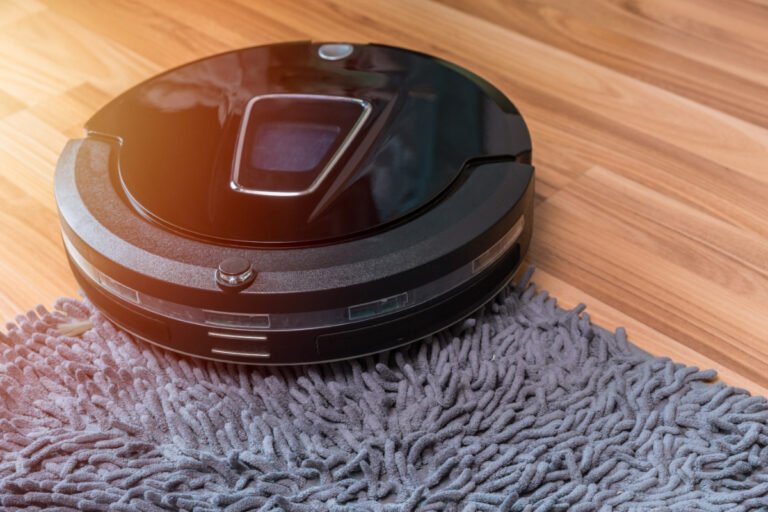How To Repair The Engine/Pump of a Vacuum

For your vacuum cleaner’s performance to be up the mark, the engine or pump needs to be working efficiently. The pump has moving parts which tend to fail overtime as a result of normal aging or wear and tear. Here’s a guide on how to repair your vacuum cleaner engine.
Read More:
- Master The Art Of How To Vacuum Mattresses And Pillows
- Master How To Vacuum Stairs Efficiently: Quick, Handy Guide!
- Can Robot Vacuums Be Hacked? Discover The Facts!
- Why Is My Robot Vacuum Beeping? Find Out Here!
- Easy Guide On How To Clean And Replace Vacuum Filters
Covering The Basic
Before we teach you how to repair your vacuum cleaner engine, first you need to know how a vacuum works and a few basic things you will need to repair the engine or pump.
The vacuum cleaner has a fan where a motor is attached. When the fan rotates, suction is created, pulling in the polluted air as well as debris and dirt. Then, a porous bag in the vacuum cleaner filters out the dirt-filled air stream. Read More: Shark vs Dyson Vacuum Comparison
Now, to repair your vacuum cleaner engine, you will need to use pliers and screwdrivers.
1) Disassembling

Start by removing the handles, getting rid of filters, and taking out the switch assembly. Be careful not to disturb the electrical connector which is typically underneath the switch assembly.
Remove the vacuum case that’s protecting the interior in order to access the core engine. This is much easier if you unscrew the neighboring motherboard so it can move freely and you get to work where needed, instead of removing it completely since you will have to rewire everything back which can be tricky if you have no experience.
In most vacuum cleaners, it’s not necessary to remove any rubber bumpers surrounding the cord wires or machine.
Take note:
You need to be gentle in removing the parts as the little pieces and bits are fragile. Also, remember where all items were previously positioned, more importantly, the screws.
Now that you’ve released the vacuum cleaner’s pump cabinet, take the motor out of the vacuum. Some models will have a motor chamber that contains all motor assembly while others only have a motor shell.
Read More:
- Master The Art Of How To Vacuum Mattresses And Pillows
- Master How To Vacuum Stairs Efficiently: Quick, Handy Guide!
- Can Robot Vacuums Be Hacked? Discover The Facts!
- Why Is My Robot Vacuum Beeping? Find Out Here!
- Easy Guide On How To Clean And Replace Vacuum Filters
2) Cleaning and Fixing Engine Parts
At the end of the motor, you’ll see a metal shield. Tap it lightly to expose the blower fan. Remove the nut holding the fan in its position. This should allow you to remove the flat spacer washer and the aluminum blower.
Gently lift the carbon motor brushes out. These are typically held in place with the spade connectors so you can seamlessly pull them out directly. The motor brushes should look solid and long.
From there, you should see 2 types of housing— the stator housing which holds that female spade socket and the brass housing which holds the male spade connector.
Once the brushes are removed, you can clean them with the electrical cleaner or replace them altogether to get the best out of your vacuum cleaner.
Take note:
If you decide to replace the brushes, always replace both of them at the same time.
After the brushes, you can now remove the vacuum engine stator by pressing down on the metal spring clip which fastens it in place. The stator should slide out easily.
There should be an electronic controller attached to the stator. You should clean up any dust or dirt residue on the inside of the stator and its housing, contributing to the optimum performance of your vacuum cleaner.
After the stator, you’ll have to carefully pull out the rotor. It should have bearing on either end in addition to the lower bearing that’s pressed into the housing which you also need to pull out carefully. Make sure not to lose the flat small spring washer and that the rotor should be removed in one piece.
You might also notice the commutator found at the end of the rotor. These are rings of copper strip which can be super dirty, which are the common cause of faulty vacuum cleaner engines. To fix this issue, you need to mount the rotor in a mini lathe (if you have one). Using wet and dry fine sandpaper, sand down the end of the commutator.
The commutator doesn’t need to be perfectly smooth and should operate just fine if there are a few small scores present. Use only feather-like strokes in order to sand down the commutator and be careful not to sand a lot away.
Next is the aluminum blower that will most likely be clogged with dust. You need to unclog it to improve the overall functioning of the vacuum cleaner. One swift push around some fins with long cable tie should do the trick in addition to an electric cleaner.
Read More:
- Master The Art Of How To Vacuum Mattresses And Pillows
- Master How To Vacuum Stairs Efficiently: Quick, Handy Guide!
- Can Robot Vacuums Be Hacked? Discover The Facts!
- Why Is My Robot Vacuum Beeping? Find Out Here!
- Easy Guide On How To Clean And Replace Vacuum Filters
3) Repairing The Electronic Gears
To repair your vacuum cleaner engine electronics, you need to be extremely careful since there will not be much that’s attached as well as a few loose main connections will be exposed.
The electronic structure of the engine is simple, containing the thermal cutout of the device as well as a triac with 20 – 30 amp. Ensure that all the triac wires are connected to the body. Also, ensure that all parts of the plastic clips holding the connectors together are not compromised, wrapping the connector in electrical tape to securely hold it together.
See if the fuse is intact, otherwise, you need to replace the fuse and check to see if the connections in the plugs are okay.
4) Reassembling
Once you’re done with all the cleaning and repairing, it is time to re-assemble the engine.
Make sure that all parts are completely dry before reassembling since you don’t want to risk short circuitry.
Restore all the pieces and screws back to their rightful places and take your time while doing it. Double-check to confirm that everything is back in place and that all wiring is intact. Read Here: How to Unclog a Vacuum Cleaner?
After reassembling, plug the vacuum cleaner to an outlet and turn it on. It should be able to function properly and correctly unless you made some mistake during the repairing and reassembling process.
In such a case, you’ll need to disassemble it once again or take the vacuum cleaner to a qualified professional in order to repair your vacuum cleaner engine.






